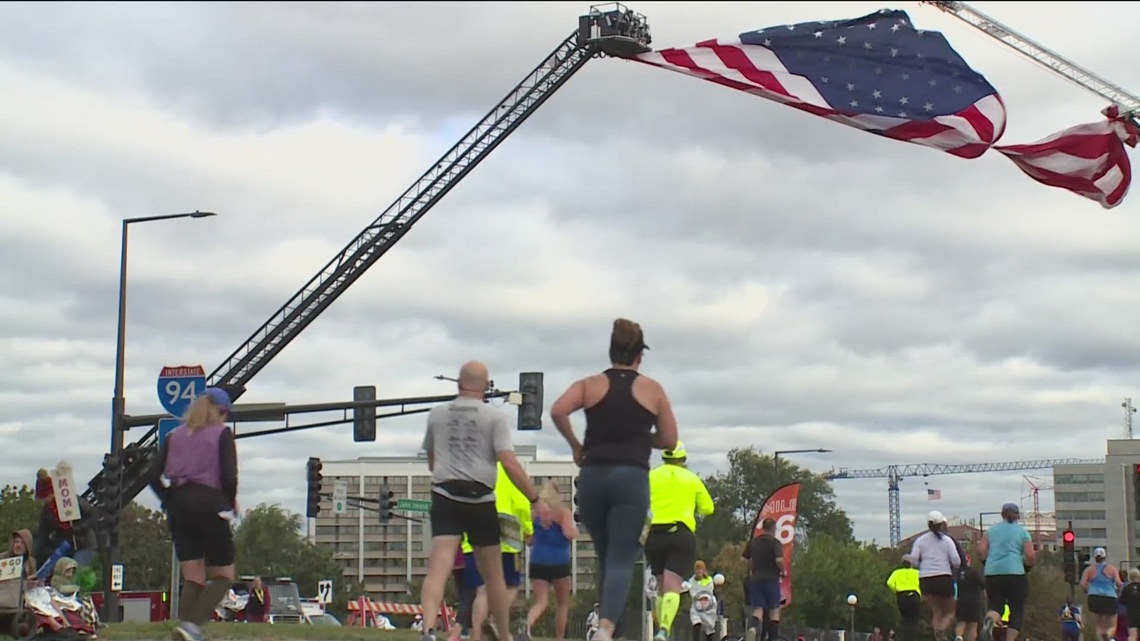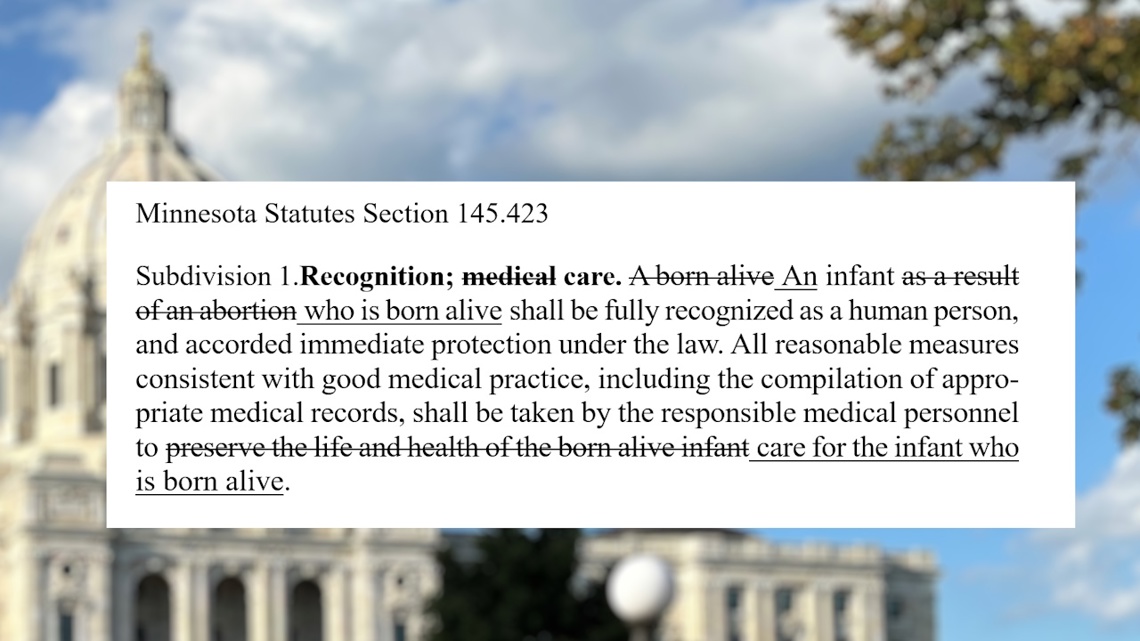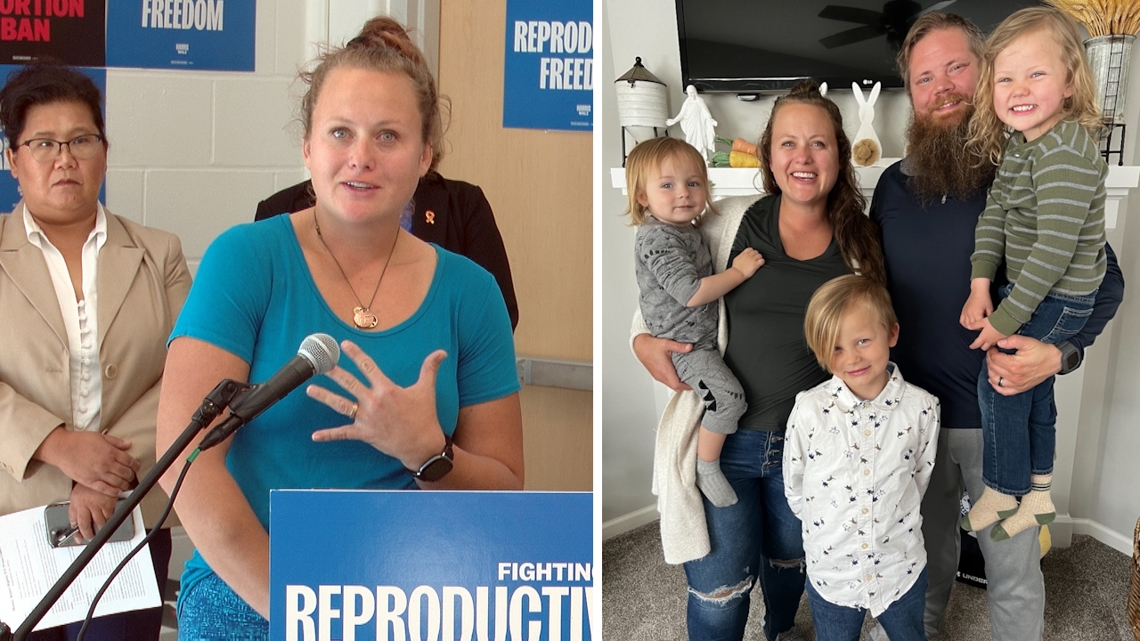Kare11
TSA warns vacationers of record summer travel season


Federal agency says travelers should prepare themselves for significant lines and crowds, but say there is a list of things to do that can make the process smoother.
MINNEAPOLIS — Hitting the sky for a getaway adventure this summer? It should come as no surprise, you’ll have plenty of company.
The Transportation Security Administration (TSA) is preparing for what is expected to be the busiest summer travel season in U.S. history starting with the extended Memorial Day weekend, when more than 18 million passengers and crew members are expected to be screened. Traffic will peak Friday, May 24, when TSA anticipates screening 3 million people.
Checkpoint volume for the extended holiday weekend should be up nearly 6.5 percent over 2023.
“In close coordination with airport, airline and travel partners, we are more than ready to handle this summer’s increased travel volumes,” said TSA Administrator David Pekoske. “We are also continuing to deploy state-of-the-art checkpoint technology that increases security effectiveness, efficiency and enhances the passenger experience and our retention and recruitment numbers are the highest they’ve ever been.”
While TSA improves both safety and efficiency at security checkpoints, they emphasize that travelers also play a role in making for a smooth experience. Here are some things the agency says you can do to make checkpoints more hassle-free.
Be aware of new checkpoint technology and follow TSA guidance
Facial recognition technology TSA utilizes helps ensure the person standing at the checkpoint is the same person pictured on their ID. Keep your boarding pass tucked away. Photos are not stored or saved after a positive ID match has been made, except in a limited testing environment for evaluation of the effectiveness of the technology. Passengers who do not want their photo taken may ask the Transportation Security Officer (TSO) for a manual ID check without penalty and losing their place in line.
Do you carry a firearm? Prepare, pack and declare
Firearms are prohibited at security checkpoints, in the secure area of an airport and in the passenger cabin of an aircraft, even if a passenger has a concealed carry permit or is in a constitutional carry jurisdiction. Passengers may travel with a firearm, but it must be secured in the passenger’s checked baggage; packed unloaded; locked in a hard-sided case; and declared to the airline when checking in at the airline ticket counter.
TSA does not confiscate or seize firearms. If a passenger brings a firearm to the security checkpoint on their person or in their carry-on luggage, the agency will contact local law enforcement to safely unload and take possession of the firearm. Law enforcement may also arrest or cite the passenger, depending on local law. TSA may impose a civil penalty up to almost $15,000, and for the first offense, passengers who bring a firearm to a security checkpoint will lose TSA PreCheck eligibility for five years. Second violations will result in permanent disqualification from the program and additional civil penalties.
Pack an empty bag, know before you go, and remember the 3-1-1 rule
When airline passengers begin packing for travel with a bag or suitcase that has been COMPLETELY emptied, they are less likely to be stopped at the security checkpoint for having prohibited items. Prior to packing that empty bag, check TSA’s “What Can I Bring?” tool to know what is prohibited. If you’re heading to the beach, you may wonder how to pack your sunscreen. Liquids, sunscreen containers and alcohol over 3.4 ounces must be packed in a checked bag. Liquids, aerosols, gels, creams and pastes are allowed in carry-on bags as long as each item is 3.4 ounces or less and placed in one quart-sized bag.
Each passenger is limited to one quart-size bag of liquids, aerosols, gels, creams and pastes.
Make sure you have a REAL ID or another acceptable ID
Adult passengers 18 years and older must show valid ID credentials at the airport checkpoint to travel. Beginning May 7, 2025, if you plan to use your state-issued ID or driver’s license to fly within the U.S., make sure you have a REAL ID or another acceptable form of ID. If you are not sure if yours is a REAL ID, check with your state DMV. For questions on acceptable IDs, go to TSA.gov.
Give yourself plenty of time
Summer travel will be busy, so give yourself plenty of time to park or return a rental car, take a shuttle, check in with your airline, drop your bags and prepare to get through the security checkpoint. Save time by removing items from pockets and placing them in your carry-on bag instead of putting items directly into bins at the conveyor belt.
Respect TSA and other frontline airport and airline employees
Disrespectful, violent or unruly behavior in the transportation system are unacceptable and will result in significant delays at checkpoints. TSOs, along with all frontline airport and airline employees and local law enforcement, are working to ensure safe and secure travel. Assaulting a TSA employee is a federal offense and will result in penalties and/or arrest.
Traveling with children? The TSA has videos created just for kiddos to help them understand the security process and reduce anxiety and fear.
For more on summer travel and what you may encounter, check out the TSA website.
WATCH MORE ON KARE 11+
Download the free KARE 11+ app for Roku, Fire TV, Apple TV and other smart TV platforms to watch more from KARE 11 anytime! The KARE 11+ app includes live streams of all of KARE 11’s newscasts. You’ll also find on-demand replays of newscasts; the latest from KARE 11 Investigates, Breaking the News and the Land of 10,000 Stories; exclusive programs like Verify and HeartThreads; and Minnesota sports talk from our partners at Locked On Minnesota.
Watch the latest local news from the Twin Cities and across Minnesota in our YouTube playlist:
Kare11
Family and friends run marathon in honor of fallen officer


Officer Paul Elmstrand had planned to run the Twin Cities Marathon, his brother said.
MINNEAPOLIS — A fallen police officer gave his loved ones a reason to run in the Medtronic Twin Cities Marathon.
Officer Paul Elmstrand’s badge number “176” was written on his older brother Erik’s arm as he completed Sunday’s marathon.
“He was going to run this race, and it was his first marathon,” Erik said, describing how his youngest sibling had decided to run in January.
“It was too early to sign up, so he didn’t officially sign up, but he created a fundraiser page with his church and committed to a group,” he said.
Officer Elmstrand was killed in February. The shooting in the line of duty also took the lives of Burnsville colleague Matthew Ruge and firefighter-paramedic Adam Finseth.
Erik said his family spent time discussing what they could do after their loss. “We’ve got to do this for Paul. It was our consensus,” he said.
Roughly 20 friends and family members ran in Paul’s honor, and his big brother completed the 26-mile race with a time just two minutes shy of the badge number he had on his arm.
“It feels good to do something to bring it home for him,” Erik said.
Kare11
Minnesota law for late-term abortions explained

In the vice presidential debate, Ohio Senator JD Vance claimed Minnesota law doesn’t require doctors to save babies born during abortion procedures.
ST PAUL, Minn. — Governor Tim Walz signed several bills affirming abortion rights in 2023, and none of them allow doctors to deprive healthy babies of medical care.
But that’s the unfounded charge being lobbed at Walz and fellow Democrats now that he has become Vice President Kamala Harris’ running mate.
In Tuesday night’s vice presidential debate, Ohio Senator JD Vance said to Walz, “As I read the Minnesota law that you signed into law, the statute that you signed into law, it says that a doctor who presides over an abortion, where the baby survives, the doctor is under no obligation to provide lifesaving care to a baby who survives a botched late-term abortion.”
Walz said it’s simply not true, but didn’t delve into the details of what the laws say.
Vance was apparently referencing a 2023 bill that amended a 2015 law known as the “Born Alive Infant Protection Act” that mandated doctors save the lives of babies born during an abortion procedure.
The DFL majority’s Omnibus Health Bill in 2023 amended the part of state law – Sec. 145.423 subdivision 1 — to remove references to babies born in abortions, but reinforced doctors’ responsibility to care for any infant born alive.


The amended law reads as follows:
- An infant who is born alive shall be fully recognized as a human person, and accorded immediate protection under the law. All reasonable measures consistent with good medical practice, including the compilation of appropriate medical records, shall be taken by the responsible medical personnel to care for the infant who is born alive.
The original language of the 2015 “Born-Alive Act” reads as follows:
- A born alive infant as a result of an abortion shall be fully recognized as a human person and be accorded immediate protection under the law. All reasonable measures consistent with good medical practice shall be taken by responsible medical personnel to preserve the life and health of the born alive infant.
Republicans contend that removing the words “to preserve the life” means that physicians are no longer required to save lives. Democrats say that’s not true and fails to recognize the reason late-term abortions are performed in the first place.
Democrats pushed for the change, asserting doctors are already obligated by law to save the lives of any person that can be saved. She also asserted the very existence of the law created the false impression that otherwise healthy babies could be allowed to die without care.
During debate of the bill, Rep. Tina Liebling, a Rochester Democrat, said the “born alive” law ignored the reality that doctors aren’t allowed to commit homicide.
“You don’t need that born alive law to protect infants against infanticide,” Rep. Liebling argued during the floor debate on the omnibus health bill in 2023.
“Infanticide is, in fact, illegal. Infanticide will remain illegal.”
She was responding to Republican lawmakers, including Rep. Peggy Scott of Andover, who reminded fellow legislators that premature babies as young as 21 weeks of gestational age had survived.
“You should not be allowed to snuff out a healthy baby.” Rep. Scott remarked during the health bill debate.
During his debate with Vice President Kamala Harris, former President Trump claimed that babies born alive in states without restrictions on abortions were being “executed” after birth. The ABC moderators instantly fact-checked Trump, noting that it’s against the law in all 50 states for a doctor to kill a living infant.
Late-term abortions are extremely rare
That narrative became part of a long-running TV ad by Minnesota Citizens Concerned for Life, the state’s oldest and largest anti-abortion organization.
In the MCCL ad, a woman points to an online newspaper article on her phone and says to her friend, “It says right here the legislature passed that allows an unborn baby to be aborted at any time up to birth. Even healthy babies with healthy moms.”
It’s true that the PRO Act signed by Governor Walz has no restriction on gestational age, but that’s not a new development. The PRO Act codified the case law rules that were already in effect in Minnesota stemming from a 1995 Minnesota Supreme Court decision known as “Doe v. Gomez.”
The reality is that third-term abortions are extremely rare in Minnesota, according to the Minnesota Department of Health’s most recent Induced Abortions Report to the Minnesota Legislature, which covered the calendar year 2022. In that year, of 12,090 abortions performed in Minnesota only 1 happened in the third trimester.
The other reality, according to the Minnesota Medical Association, is that any abortion performed that late in pregnancy would involve an infant that wouldn’t be able to live very long after birth and a situation in which the mother’s health is threatened in some way.
These are not “botched” abortions resulting in healthy babies, as Sen. Vance contended.
Sen. Erin Maye Quade, an Apple Valley Democrat, said that in virtually every late-term abortion an induced delivery that recognizes the baby will have extreme abnormalities that prevent its survival.
“In those cases, the induction of childbirth is the method of abortion, it is the method of terminating a pregnancy. So, in those cases an infant being born alive is the goal. That’s the point. The parents hold and spend time with that child before it passes away,” Sen. Maye Quade explained.
“We changed the law to be appropriate so that all children access medical care that’s appropriate for them, and for some of these families the appropriate care is palliative care for their dying baby.”


Tippy Amundson credits her later-term abortion with making it possible for her to have children later. She learned during the 20-week checkup in her first pregnancy that her baby had stopped developing and wouldn’t survive outside the womb. She was also warned that continuing the pregnancy would result in a complication that could require removing her uterus.
“The only reason I have my three beautiful boys today is because I had an abortion. Without it, I might not have a uterus, and I might not have my family,” Amundson said during a reproductive rights press conference sponsored by the Harris-Walz campaign.
She wasn’t able to hold her aborted child but empathizes with parents who want that choice.
“The born alive statements that Trump keeps making are so hurtful to families like mine. What he does by saying those things in a very public way just rips out the souls of those mothers who want an opportunity to say goodbye to their baby.”
Conservative politicians have seized on the 2021 Born Alive Report, a subsection of the Health Department’s 2021 Induced Abortions Report. It describes five live births that occurred during abortions in Minnesota.
That report details the circumstances as follows:
- In one instance, fetal anomalies were reported resulting in death shortly after delivery. No measures taken to preserve life were reported and the infant did not survive.
- In two instances, comfort care measures were provided as planned and the infant did not survive.
- In two instances, the infant was pre-viable. No measures taken to preserve life were reported and the infant did not survive.
According to the American College of Obstetricians and Gynecologists, a “pre-viable infant” is one that isn’t developed enough to survive outside of the uterus. For example, the baby may have a beating heart but is born without fully developed lungs and wouldn’t be able to breathe on its own.
That 2021 report came out two years before lawmakers changed the “Born Alive Infant Protection Act.”
Sen. Maye Quade said it’s wrong to speculate those five late-term live births involved babies that would’ve survived, or that the changes made in 2023 would encourage needless late-term abortions in this state.
“These lies are exactly kinds of rhetoric that scare people but also put shame onto these families that are going through some of the worst things they have heard, so folks need to know that they are capitalizing on the worst moments of these families lives to perpetuate a lie and a myth to voters.”
Kare11
Officials: Park ranger dies while attempting to rescue civilians


The three members of the public swam to safety but the ranger was unaccounted for, according to the park service.
INTERNATIONAL FALLS, Minn. — The National Park Service is investigating the death of a law enforcement park ranger after the ranger responded to a call for assistance from a distressed vessel.
The ranger responded to the civilian vessel in distress on Namakan Lake in Voyageurs National Park, according to the park service.
While the ranger was towing the other vehicle, the park service boat capsized and forced the ranger and all three people who were being helped from the boat.
The three members of the public swam to safety but the ranger was unaccounted for, according to the park service.
“After a three-hour search, the ranger’s body was recovered from Namakan Lake at approximately 3:20 p.m.,” said the statement.
High winds and rough waters were reported at the time of the incident.
This is a developing story and will be updated as more information becomes available.



